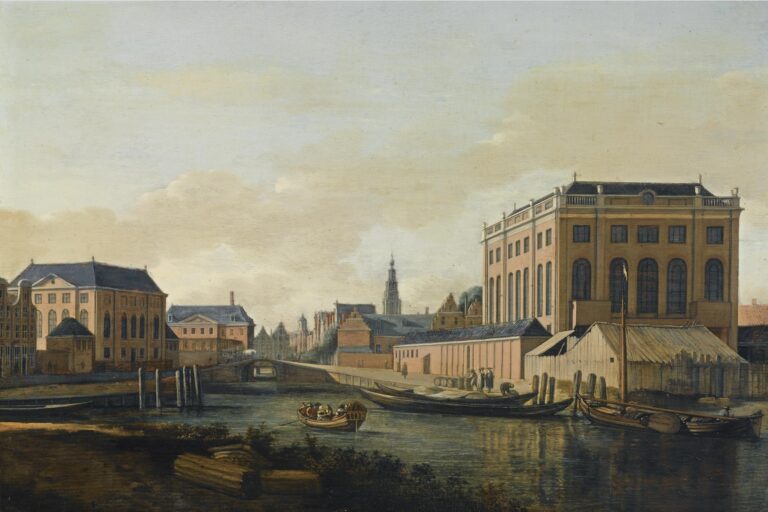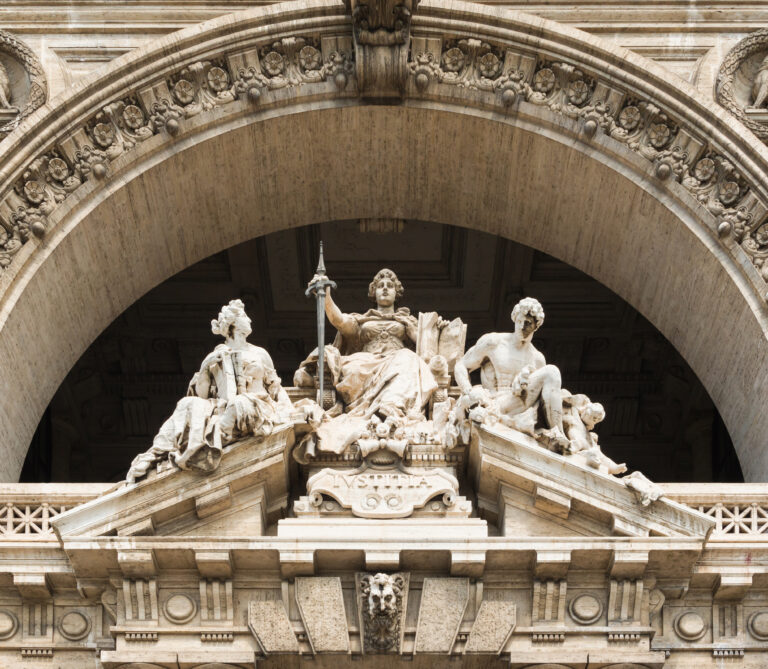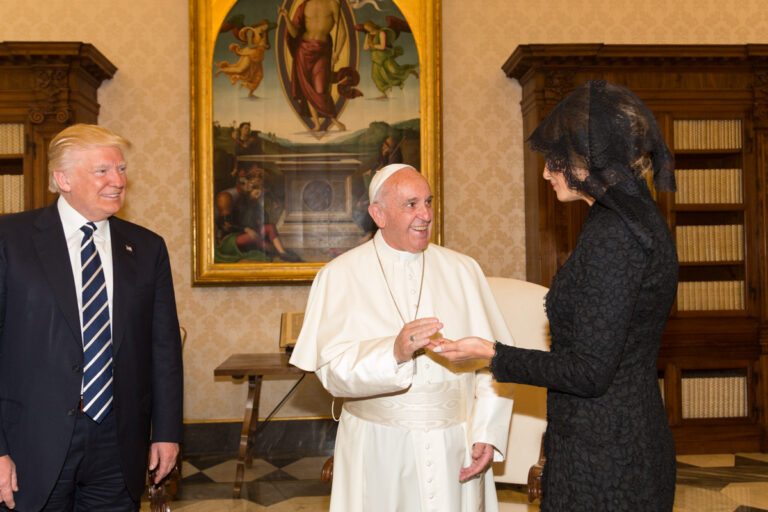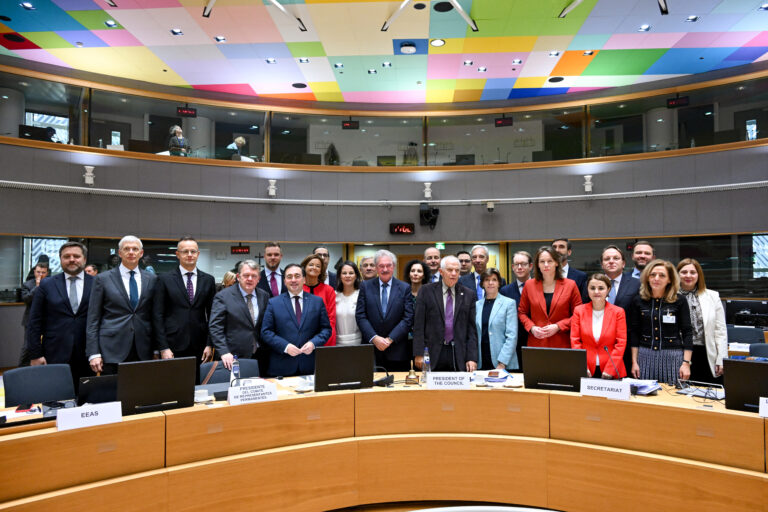
The Management and Reuse of Catholic Churches in Belgium, France, and Italy from a Comparative Perspective
Davide Dimodugno
The following is a translated introduction to Davide Dimodugno’s latest book, La gestione e il riuso delle chiese cattoliche in una prospettiva comparata – Un’indagine tra Belgio, Francia e Italia (Turin, 2025). Dimodugno’s work is available to read through open access.
The reflection on the issues of management and reuse of buildings of worship, already begun in a first monograph and highlighted previously on Canopy Forum, is completed in this volume through an in-depth study of buildings of worship in Belgium and France. Although these countries have ancient Catholic traditions, they have been undergoing a process of advanced secularization for decades. The comparison with Italy aims to highlight how the different systems of relations between the state and religious denominations and the multiplicity of regulations involved can affect the issuance of bishop’s decrees, which reduce churches to profane use pursuant to Canon 1222 §2. Proposals for solutions for the Italian context have thus been identified, inspired by international best practices based on dialogue, collaboration, and participation.
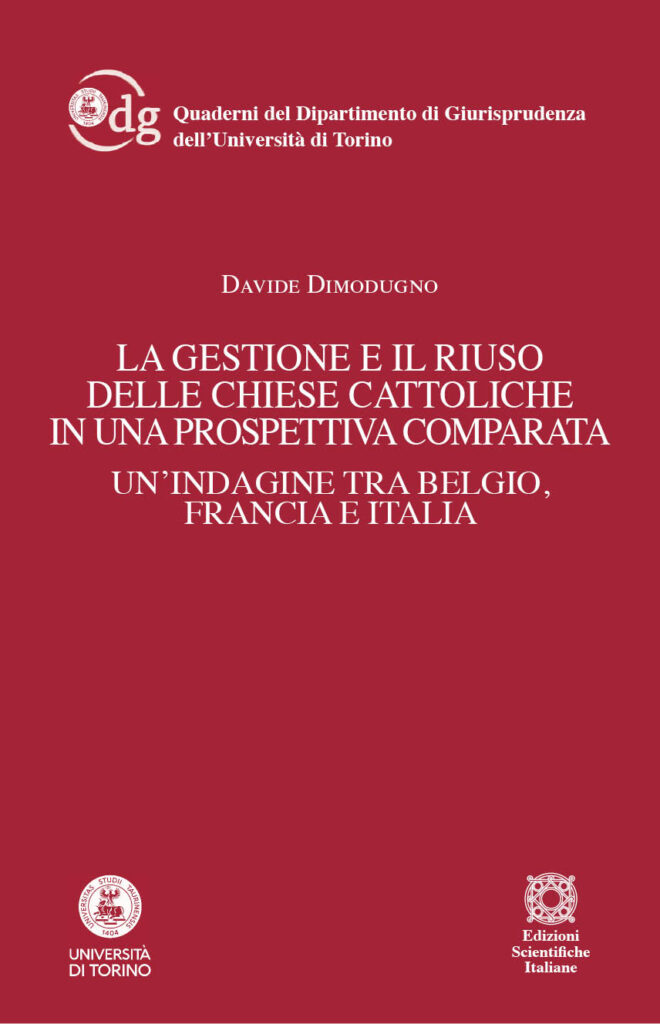
After presenting, in my first volume, the themes of the management and reuse of places of worship in Italy, tackling the legal issues that emerged from the analysis of numerous case studies and proposing innovative solutions for a broader and more systematic framing of the phenomenon, this second volume intends to broaden the horizons and offer a comparison with Belgium and France.
Both Belgium and France are two countries with ancient Catholic traditions, both of which in recent decades have undergone processes of advanced secularization, even more intense than which can be seen in Italy today. Looking at the solutions adopted in these two countries therefore means predicting future scenarios. We must also anticipate potential issues at an academic level and in public debate in order to avoid finding oneself unprepared in the face of a potentially explosive situation, with tens of thousands of buildings in disuse and in potential states of abandonment, both in urban and rural areas.
Canon law, and specifically Canon 1222 §2 on the reduction of churches to secular use, applies worldwide, establishing rather strict criteria that the diocesan bishop must follow, i.e.: 1) there must be a serious cause justifying the issuing of the measure; 2) the future profane use must not be indecorous; 3) the prior opinion (mandatory but not binding) of the presbyteral council must be heard; 4) the consent of those entitled must be obtained; and 5) the good of souls must be safeguarded, given that another place of worship is available within a reasonable distance.
Nevertheless, the manner in which the norm is applied varies considerably in different contexts. In fact, what is considered decorous or indecorous can change depending on the level of secularization, the ownership regime (public or private) of places of worship, and the system of relations between the state and religious denominations in each country.
In Belgium and France, the doctrine, especially in the field of architecture, has for years been dealing with the issues connected with the adaptive reuse of places of worship, and of churches in particular. Our attempt has been to present the problem in its fundamental and indispensable legal dimension, in the interweaving of canon law, universal and particular, the administrative law of cultural heritage and zoning, and civil law. The objective of this second book is to understand how the different systems of relations between the State and religious denominations and the different regulations involved affect the implementation of the solutions of re-use and mixed use in space and time. The monograph uses this background to suggest proposals for solutions and changes to be made, both within the Italian legal system and in the approach taken by the Italian government, by the Italian Bishops’ Conference, and by individual dioceses.
The investigation method followed in this research sought to compare the three countries from different points of view: law and religion, relations between states and religious denominations with regard to buildings for worship, and the protections and enhancements for sites of cultural heritage. Additionally, the methodology is oriented toward civil law, with regard to the common problem of guaranteeing the effectiveness over time of non-indecorous use clauses, in order to propose solutions appropriate to the Italian context. To this end, it was essential to analyze how the ownership and management of places of worship are regulated in the three countries and the evolution of the different systems of relations between the State and religious denominations to then propose probable solutions.
Belgium is the only country that remained faithful to Napoleon’s original design, the result of the Articles Organiques, which were unilaterally issued during the First French Republic a few months after the Concordat between Napoleon and Pius VII was signed in 1801. Our attention is specifically aimed at the situation in Flanders. This Belgian region has so far intervened the most in modifying this legislation, going so far as to find in the instrument of the “strategic plans” an effective and participatory means – even if unilaterally imposed by the public authority – to establish a dialogue on the future of these goods between the municipal property, the dioceses and the vestries.
Even today, despite the different disciplines characterizing the three regions of Flanders, Wallonia and Brussels-Capital, the Kingdom of Belgium still retains the institution of the fabrique d’église or vestry board. This is a public body, corresponding to the canonical legal person of the parish, which is responsible for the management of Catholic churches. Belgian Catholic churches became public property following expropriations during the revolutionary period and were mandated that they must be financially supported by the municipalities and provinces in the event of deficits. This model was also shared by France until the passing of the 1905 law on the Separation of the Churches and State, resulting in the abandonment of this system in favor of a more secular stance. This decision not only led to the abolition of the fabriques d’église but also, paradoxically, due to the Catholic Church’s failure to create religious associations, led to the final acquisition of previously built churches to public ownership in France.
Finally, Italy is characterized by a regime of essentially private ownership of churches, mostly in the hands of civilly recognized ecclesiastical bodies (parishes, confraternities, dioceses, institutes of consecrated life, etc.) and to a lesser extent in public hands (State Property, Fondo Edifici di Culto – Worship Buildings Fund, Regions, Provinces, and Municipalities). This regime appears to have been significantly strengthened by the inclusion, in the Civil Code of 1942, enacted during the pax concordataria between the Fascist regime and the Catholic Church, of a provision, Article 831, paragraph 2, which recognizes, only for buildings intended for the public exercise of Catholic worship, a constraint of use that arises and ceases “in accordance with the laws concerning them”. This is, in essence, an implicit reference to the code of canon law and, more specifically, to the liturgical acts of dedication and benediction and the singular administrative act by which the diocesan bishop reduces a church to non-sordid profane use.
Our research intends to examine, therefore, how the constraint of use for worship, present in all three of the legal systems considered, may affect the canonical procedure of dismissal and the possibility of reusing buildings of worship for social or cultural purposes. In Belgium and France, the affectation cultuelle constraint is closely linked to the tendentially public ownership of churches, making it necessary to initiate an administrative procedure, regulated by civil law, for its cessation (désaffectation). This differs from the Italian legal system, in which the decree of reduction to profane uses pursuant to Canon 1222 §2 entails the termination of the constraint on use for public Catholic worship established by civil law.
In the same way, we intend to investigate how much and how the cultural heritage legislation affects the implementation of the reuse hypothesis. We can anticipate that neither Belgian nor French legislation provides for an institution similar to the assessment of the compatibility of use with the historical and artistic character of the property, as in Italy. This assessment must be carried out by the superintendent in accordance with the combined provisions of Article 20, paragraph 1, and Article 21, paragraph 4, second sentence, of Legislative Decree 22 January 2011, Code of Cultural Heritage and Landscape. This seems to simplify the framework considerably, leaving it solely to the ecclesiastical authority to assess the decorum of the new secular use or its compatibility with liturgical use in the case of mixed uses.
In addition, it should be emphasized that both French and Belgian (Flanders, Wallonia, and the Brussels-Capital Regions) legislations provide for differentiated and graduated levels of protection, so that only a small portion of the Catholic heritage is fully protected as monument historique, i.e. included in the most valuable part of the patrimoine culturel. On the contrary, the Italian presumptive mechanism, by virtue of which the vast majority of churches, because they belong to ecclesiastical or public bodies, are included in cultural heritage and are all protected in the same way, does not distinguish between the cathedral of exceptional value, perhaps recognized as a world heritage site, and the small mountain chapel. It will also be interesting to note how, once the cultural purpose has ceased to exist and the owner’s rights have been fully restored, the problem arises everywhere of how to ensure that the use remains appropriate over time, and how the instruments adopted to date, such as preference agreements and temporary inalienability clauses, fail to overcome the principle, derived from the code Napoléon, of the relativity of contractual clauses, which cannot go so far as to bind all subsequent purchasers in the future.
In conclusion, identifying, analyzing, and comparing the principles and discipline underlying the management and reuse of places of worship in three different countries appears essential in order to assess the best solutions at an international level and how to adapt them to the specific Italian context, through the suggestion of de iure condendo changes, both to the specific canonical legislation and to the state legislation. It will also be necessary to abandon the traditional approach, based on the “most urgent emergency” and on the “case by case”, without any overall vision of the phenomenon, in order to trace a new, more convincing and sustainable “Italian way” to the reuse of over-abundant places of worship. In our opinion, only the use of innovative legal instruments, inspired by the best of what foreign experiences can offer, can succeed in transforming an objective problem into a resource, into an extraordinary opportunity for the cultural, social and economic development of our communities. ♦
The ambitious aim of this investigation was made possible thanks to the “Outgoing & Incoming support programs” of the “Department of Excellence 2018-2022” project of the Department of Law of the University of Turin, which allowed me to spend two study periods abroad, respectively in 2020 at the KU Leuven (Belgium) and in 2021 at the Université Paris-Saclay (France). These experiences not only broadened the cultural horizons of my research and allowed me to identify new solutions applicable to the Italian context, but they also gave me the opportunity to get in touch with many professors, professionals and active citizens, who are studying and tackling, in their respective countries, the issues related to the management and reuse of Catholic churches. To their valuable suggestions and contributions, the present work is greatly indebted. Therefore, my warmest and most heartfelt thanks goes to them.

Davide Dimodugno received his PhD in “Law and Institutions” with honours in 2022 from the University of Turin, Law Department, where he is a Postdoctoral Researcher in Law and Religion. He is a member of EUARE, European Academy of Religion, ICOMOS, International Council for Monuments and Sites, FRH, Future for Religious Heritage, ICLARS, International Consortium for Law and Religion Studies, and an aggregate member of ADEC, Association of Academics in Law and Religion in Italy. He is licensed to practice law.
Recommended Citation
Dimodugno, Davide. “The Management and Reuse of Catholic Churches in Belgium, France, and Italy from a Comparative Perspective.” Canopy Forum, May 15, 2025. https://canopyforum.org/2025/05/15/the-management-and-reuse-of-catholic-churches-in-belgium-france-and-italy-from-a-comparative-perspective/.
Recent Posts



